Have you ever been immersed in a creative embroidery project, only to be frustrated by the mysterious entanglement of your thread around the bobbin? A common dilemma can disrupt the flow of your artistic endeavors.
Understanding the reasons behind this seemingly perplexing occurrence is key to overcoming it and ensuring a smooth stitching process. So, why does embroidery thread wrap around the bobbin? How do you avoid it to get the perfect results?
In this exploration, we’ll delve into the factors contributing to embroidery thread wrapping around the bobbin, unraveling the intricacies of tension, thread quality, and machine settings.
Armed with this knowledge, you’ll be equipped to troubleshoot and enhance your embroidery experience. Let’s demystify the challenges and empower your craft with insights into the fascinating world of embroidery mechanics.
Delve into tension, thread quality, and machine settings for an enhanced embroidery experience.
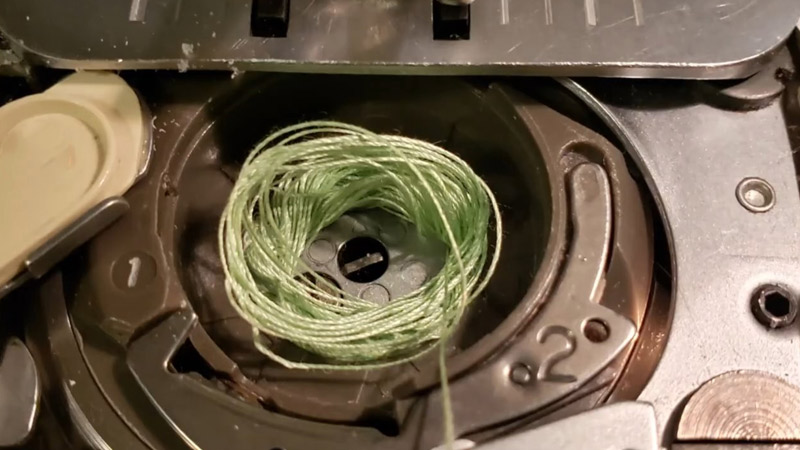
Why Does Embroidery Thread Wrap Around Bobbin?
Understanding the root causes behind this problem is crucial for overcoming it and ensuring a smooth embroidery experience.
Let’s delve into the intricacies of why embroidery thread wraps around the bobbin, exploring the answer to ‘Why is my thread wrapping around the bobbin?’
Tension Troubles
One of the primary reasons embroidery thread wraps around the bobbin is tension imbalance. Tension refers to the amount of resistance the thread encounters as it passes through the various components of the sewing machine.
When tension is too high or too low, it can lead to issues like thread breakage, loops, and, you guessed it, wrapping around the bobbin.
Thread Quality Matters
Another significant factor contributing to thread wrapping is the quality of the embroidery thread itself. Threads with irregular thickness or weak fibers are more prone to breakage and tangling.
Investing in high-quality embroidery thread can make a substantial difference. Opt for threads specifically designed for embroidery, as they are often smoother, more durable, and less prone to snagging or fraying.
Bobbin Woes
The bobbin itself can be a source of trouble regarding thread entanglement. Ensure that the bobbin is correctly wound and inserted into the bobbin case.
If the bobbin is unevenly wound or not properly seated, it can lead to irregular tension, causing the thread to wrap around it during embroidery.
Regularly inspect the bobbin for any rough edges or burrs that could snag the thread. Smooth out any imperfections with fine sandpaper or replace the bobbin if necessary.
Machine Settings and Needle Selection
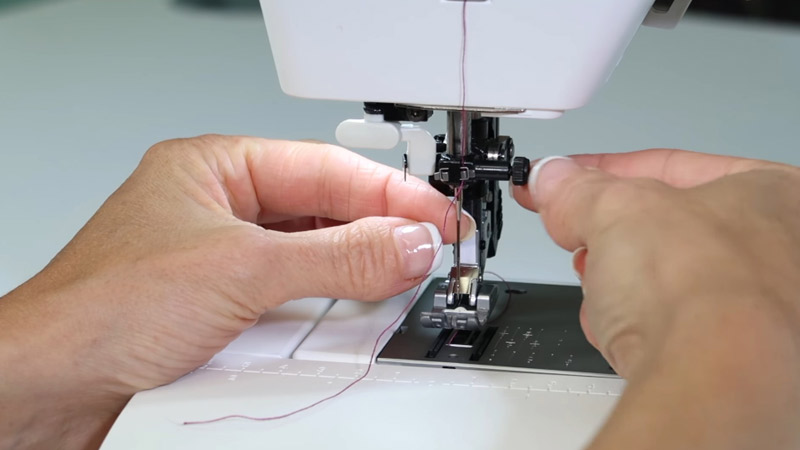
Incorrect machine settings and needle choices can also contribute to bobbin thread tangling. Ensure that your machine settings, such as stitch length and speed, are appropriate for the type of embroidery you are doing.
Using the wrong needle size or a dull needle can cause thread breakage and tangling issues. Experiment with different needle sizes and types based on the fabric and thread you are using.
Thread Path Issues
Sometimes, the way the thread is threaded through the machine can be a culprit of thread wrapping around the bobbin case.
Double-check that the thread follows the correct path according to your machine’s manual. Incorrect threading can disrupt the tension balance and lead to unpredictable behavior, including the thread wrapping around the bobbin.
Carefully rethread the upper and lower threads, ensuring they pass through all the necessary guides and tension discs.
How do you avoid Bobbin thread bunching, looping, and tangling?
Avoiding bobbin thread bunching, looping, and tangling is essential for a seamless and frustration-free sewing or embroidery experience. Here’s a comprehensive guide to help you troubleshoot and prevent these issues:
Check and Adjust Tension
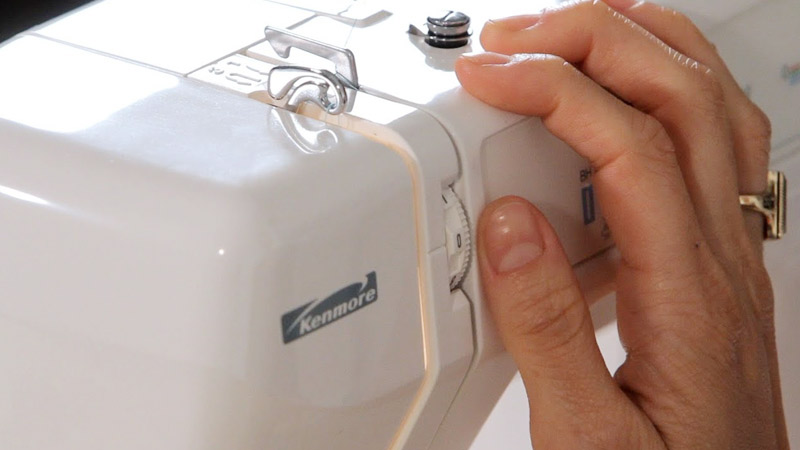
Start by checking the upper thread tension. Most sewing machines have a tension dial that allows you to adjust the tension of the upper thread.
If the tension is too tight, it can cause bunching and looping. Experiment with different tension settings until you find the right balance.
Similarly, check the bobbin tension. Adjust the tension screw on the bobbin case slightly to achieve the desired tension. Ensure the bobbin thread is properly wound and inserted into the case.
Use High-Quality Thread
Invest in a good-quality thread specifically designed for your sewing machine. Low-quality or old threads can lead to uneven tension, breakage, and tangling.
Quality threads are less likely to have knots, weak spots, or irregular thickness, reducing the chances of bobbin thread issues.
Proper Bobbin Winding
Ensure that the bobbin is correctly wound. Unevenly wound bobbins can cause uneven tension, resulting in thread bunching.
Follow your machine’s manual for the correct way to wind bobbins, and make sure the thread is evenly distributed. Also, learn the process of thread wrapping around the spool pin correctly.
Smooth Bobbin Case
Regularly inspect the bobbin case for any rough edges, burrs, or debris that could snag the thread. Smooth out any imperfections using fine sandpaper. A smooth bobbin case reduces friction, minimizing the chances of thread bunching and tangling.
Machine Maintenance
Keep your sewing machine well-maintained. Clean lint and debris regularly from the bobbin area, feed dogs and tension discs. A clean machine operates more smoothly, reducing the likelihood of thread-related issues.
Check Bobbin Compatibility
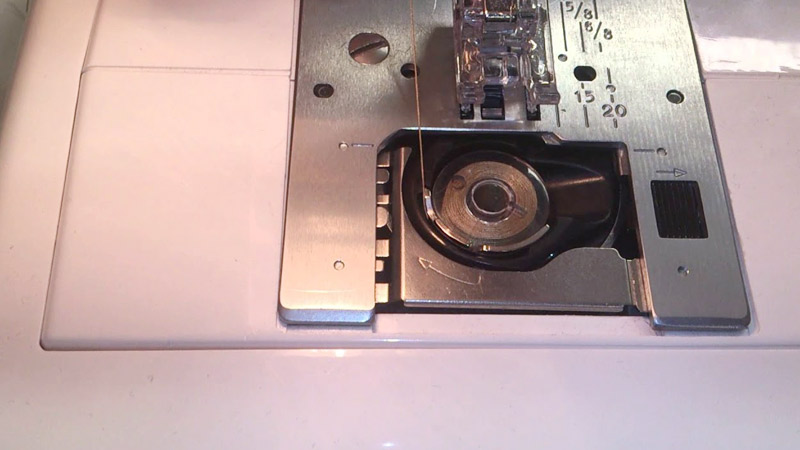
Ensure you are using the correct type and size of bobbin for your machine. Using an incompatible bobbin can lead to tension problems and thread tangling.
Consult your machine’s manual to determine the appropriate bobbin type for your specific model.
Needle Selection and Condition
Ensure you are using the correct needle for your project. Using the wrong needle size or a dull needle can cause thread breakage and tangling.
Change your needle regularly, especially if you notice any signs of wear or if you’re working with thick fabrics.
Thread Path Check
Double-check the threading path of both the upper and lower threads. Incorrect threading can disrupt tension and lead to bobbin thread problems.
Follow your machine’s manual to ensure the correct threading sequence, paying attention to threading guides and tension discs.
Bobbin Placement
Ensure the bobbin is inserted correctly into the case to avoid thread wrap. Incorrect placement can lead to uneven tension and thread tangling. Follow your machine’s manual for the proper way to insert the bobbin.
Stitch Length and Speed
Based on your project, adjust your machine’s settings, including stitch length and speed. Inappropriate settings can contribute to bobbin thread issues.
Experiment with different settings to find the optimal combination for your specific sewing or embroidery task.
Fabric and Thread Compatibility
Consider the compatibility of your fabric and thread. Thick fabrics may require larger needles and looser tension, while delicate fabrics might need finer threads and tighter tension. Finding the right balance ensures smooth stitching without bobbin thread problems.
Practice Proper Thread Control
While sewing, hold the thread tails for the first few stitches to prevent them from getting pulled into the machine. This prevents the bobbin thread from being inadvertently pulled to the top and causing tangling.
How Do You Wrap the Thread Around a Bobbin Correctly?
Wrapping thread around a bobbin correctly is crucial for smooth and efficient sewing. Here’s a step-by-step guide to ensure you wind your bobbin accurately:
Place the Thread on the Spool Pin
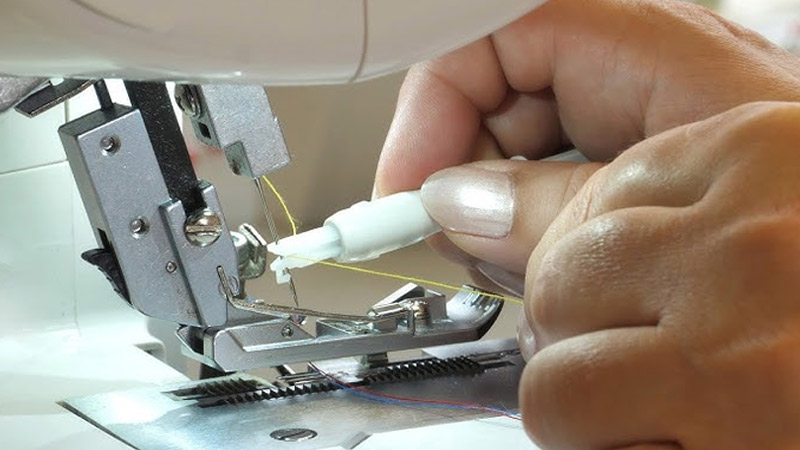
Start by placing your thread spool on the designated spool pin on your sewing machine.
Follow the threading path specified in your machine’s manual. Typically, the thread passes through various guides, the tension discs, and the take-up lever.
Pull the Thread through the Bobbin Case
Once threaded, bring the thread down and pass it through the small hole in the bobbin from the inside to the outside.
Place the bobbin onto the bobbin winder spindle, ensuring it clicks into place. Some machines have a separate bobbin winding spindle; consult your manual for guidance.
Secure the Thread on the Bobbin
Hold the end of the thread tail against the bobbin with your hand or by using the bobbin winder’s built-in securing mechanism.
On your sewing machine, locate the bobbin winding mechanism. This is often a lever or switch that you need to engage to redirect power to the bobbin winder.
Start the Machine
Begin the winding process by starting your sewing machine. The bobbin will rotate, winding the thread evenly around it.
Monitor the winding process to ensure the thread distributes evenly across the bobbin. It’s essential to prevent uneven winding, leading to tension issues during sewing.
Control the Thread Tension
Some machines allow you to control the tension on the thread while winding the bobbin. If your machine has this feature, adjust the tension appropriately for a well-wound bobbin.
Once the bobbin is sufficiently filled, cut the thread and disengage the bobbin winder. Remove the bobbin from the spindle.
Insert the Bobbin into the Bobbin Case
Ensure the bobbin is inserted into the bobbin case with the thread unwinding in the correct direction. Refer to your machine’s manual for the proper orientation.
Draw the thread through the bobbin case’s thread guides, ensuring it clicks into the tension spring. Pull the thread tail through any additional guides specified in your machine’s manual.
Test the Bobbin Thread
Perform a test by gently tugging the bobbin thread. It should release smoothly with a slight resistance, indicating proper tension.
By following these steps and referring to your machine’s manual for specific instructions, you can confidently and correctly wrap the thread around a bobbin, setting the foundation for successful and trouble-free sewing.
FAQs
What is thread wrapped around?
The thread is typically wrapped around a bobbin, a small cylindrical device, during the winding process. The bobbin holds the thread that is used as the lower thread in sewing or embroidery.
How do you keep embroidery floss from tangling?
Consider using a floss organizer or bobbin to prevent embroidery floss from tangling. Wind the floss neatly around the bobbin or place individual strands in the organizer’s compartments. Additionally, pull the floss from the non-working end to minimize twisting.
Why does my thread keep wrapping around the bobbin during sewing?
Thread wrapping around the bobbin during sewing can be due to tension issues. Check and adjust both the upper and lower thread tensions to ensure a proper balance. Also, examine the bobbin for even winding and any rough edges that may cause tangling.
Can I use any bobbin for my sewing machine?
Using the correct type and size of bobbin recommended for your sewing machine is crucial. Using an incompatible bobbin can lead to tension problems, affecting the overall stitching quality. Consult your machine’s manual for the appropriate bobbin specifications.
How do I prevent knots when winding a bobbin?
To avoid knots while winding a bobbin, ensure that the thread is properly guided through the bobbin’s winding path. Hold the thread taut and start the winding process slowly.
Conclusion
Understanding why embroidery thread wraps around the bobbin is pivotal for any enthusiast seeking a seamless creative journey.
The interplay of tension, thread quality, and machine settings has been unraveled, providing a roadmap to troubleshoot and enhance stitching precision.
By grasping these intricacies, crafters can transform frustrating challenges into opportunities for mastery, ensuring smoother and more gratifying embroidery projects.
Remember to regularly check and adjust tension settings, opt for high-quality threads, and fine-tune machine configurations to suit your specific project needs.
Armed with this knowledge, you’ll conquer the mystery of thread entanglement and elevate your embroidery skills.
Experiment with adjustments, be mindful of the materials you use and maintain your machine diligently to ensure a smoother and more enjoyable embroidery experience.
Embrace the artistry, overcome setbacks, and let your creativity flourish unencumbered by the once elusive issue of thread wrapping around the bobbin.
Leave a Reply